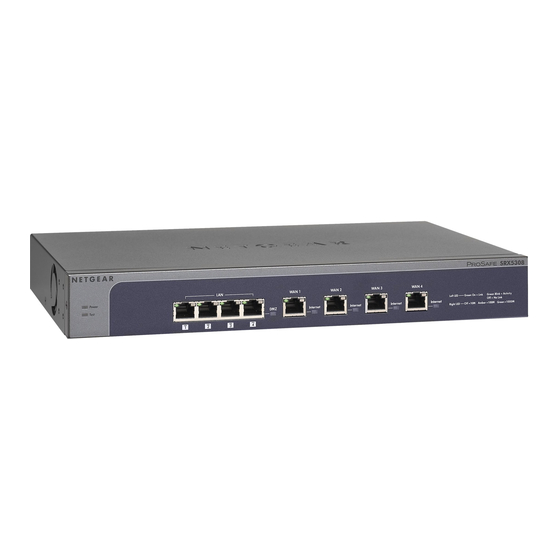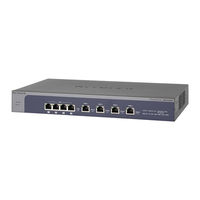
Netgear ProSAFE SRX5308 Manuals
Manuals and User Guides for Netgear ProSAFE SRX5308. We have 7 Netgear ProSAFE SRX5308 manuals available for free PDF download: Reference Manual, Cli Reference Manual, Datasheet, Installation Manual
Netgear ProSAFE SRX5308 Reference Manual (469 pages)
Gigabit Quad WAN SSL VPN Firewall
Table of Contents
-
-
-
-
-
-
-
-
-
-
-
Back up Settings348
-
Restore Settings349
-
-
Advertisement
Netgear ProSAFE SRX5308 Reference Manual (384 pages)
Gigabit Quad WAN SSL VPN Firewall
Table of Contents
-
-
-
-
-
-
-
-
Viewing Policies220
-
Adding a Policy221
-
-
-
-
NETGEAR ProSAFE SRX5308 Reference Manual (361 pages)
ProSafe Gigabit Quad WAN SSL VPN Firewall
Table of Contents
-
-
-
-
-
-
-
-
View Policies213
-
Add a Policy214
-
-
-
-
Advertisement
NETGEAR ProSAFE SRX5308 Reference Manual (357 pages)
Gigabit Quad WAN SSL VPN Firewall
Table of Contents
-
-
-
-
-
-
-
-
View Policies211
-
Add a Policy212
-
-
-
-
Netgear ProSAFE SRX5308 Cli Reference Manual (328 pages)
Gigabit Quad WAN SSL VPN Firewall
Table of Contents
-
-
-
Upnp Command176
-
-
SNMP Commands191
-
-
-
-
-
-
Show System Logs309
-
-
Netgear ProSAFE SRX5308 Installation Manual (2 pages)
Gigabit Quad WAN SSL VPN Firewall
NETGEAR ProSAFE SRX5308 Datasheet (3 pages)
Quad WAN Gigabit SSL VPN Firewall
Advertisement
Related Products
- Netgear SRXN3205 - ProSafe Wireless-N VPN Firewall Wireless Router
- Netgear ProSafe FVS114
- NETGEAR ProSafe FR328S
- NETGEAR ProSafe VPN Firewall 50 FVS338 FVS338 FVS338
- NETGEAR ProSafe VPN Firewall 200 FVX538
- Netgear ProSafe FVS318v3
- Netgear ProSAFE FVS336G v3
- Netgear ProSAFE FVS318G v2
- NETGEAR ProSafe Quad WAN FR538G
- NETGEAR SRX5308 - ProSafe® Quad WAN Gigabit SSL VPN Firewall






